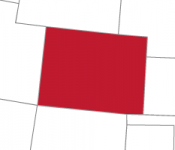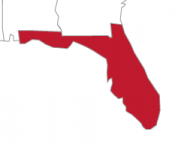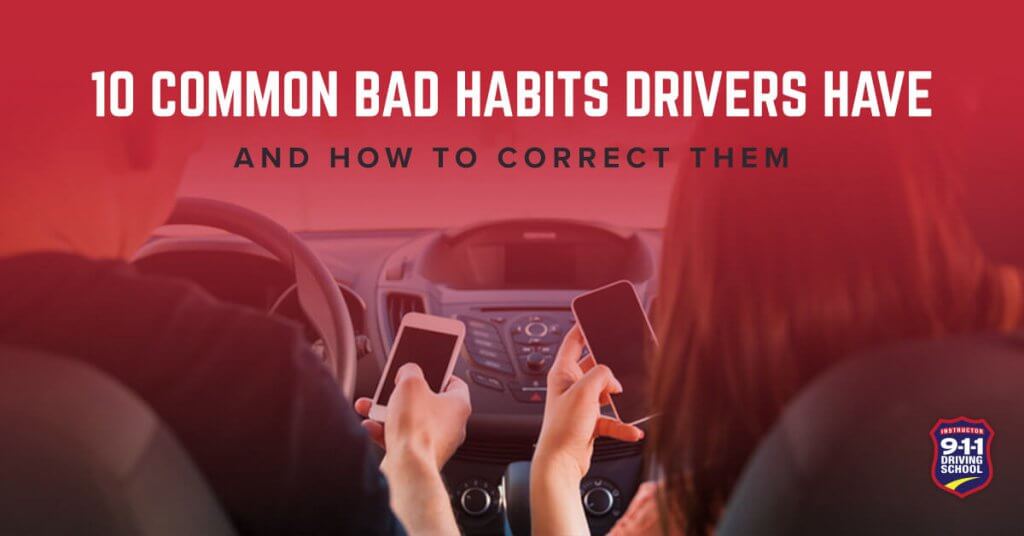Drivers of all ages and experience levels make mistakes while they drive. It never hurts to have a little reminder about ways you can improve your skills, especially when it comes to driving a car. Since a vehicle can cause so much damage, it is important to drive carefully. Some of the most common bad habits drivers develop are easy to correct, making the roads safer for everyone. Here are ten examples.
1. Not using a turn signal
The purpose of the turn signal is to let drivers and pedestrians around you know what your intentions are switching lanes, at an intersection, or in a parking lot. When drivers neglect to use their signal, they risk causing a collision or dangerous situation for a pedestrian. The best way to correct this problem is to get in the habit of using your signals.
2. Right of Way Errors
When approaching an intersection, it is very important to know which vehicle has the right of way. Unfortunately, not enough drivers remember the rules. Even if you know that you have the right of way though, it is important to still watch the other drivers. If another driver thinks they have the right of way and proceeds into the intersection, it is better to yield and stay alive than to crash and risk injury.
3. Observing signs
There are many signs along the road that help alert drivers to dangers, keep everyone informed on speed limits, upcoming turns, road conditions, and more. Paying attention and following the road signs, it can help keep you and the other drivers around you safe.
4. Turning errors
If a driver starts turning at the wrong spot or misses their turn, too many times they sit and wait to get back into traffic or block the driving lane to wait for an opening in the turn lane for them to fit in. If you realize you are in a turning lane and realize you shouldn’t be, just turn. It is better to get turned around than risk pulling back into traffic and holding up the line behind you. If you realize you missed the chance to get in the correct turning lane, turn at the next opportunity instead and come back. Do not block traffic. It is not just rude; it can cause a crash with multiple cars.
5. Parallel parking
One of the most dreaded driving test skills, the art of parallel parking evades many drivers. To correct this problem, practice is required. Pull up alongside the car that will be in front of your parked car, lining up your rear bumpers and leaving two feet between your cars. Turn your wheel and reverse into the parking space until your front passenger door lines up with the other car’s bumper. Quickly turn your wheel the other way and glide your car into the spot. Straighten out before exiting the car.
6. Illegal maneuvers
Many drivers don’t notice the maneuvers they do are illegal and put others in danger. Make sure that you stop at all stop signs and red lights, only make U-turns in authorized areas, and park in marked areas only.
7. Driving under the influence
Never operate a car under the influence of drugs or alcohol. Play it safe by reading all the directions on medications you are taking so you know if it will impair your motor skills. If you have been drinking at a party, do not over-estimate your abilities and try to drive.
8. Driving drowsy
Another danger is operating a vehicle when drowsy. Drowsy driving is just as dangerous as drunk driving because abilities and judgement is impaired. Falling asleep at the wheel is dangerous for the driver, the passengers in the vehicle, and others on the road. If you are tired, switch drivers or pull off the road to rest.
9. Not having a driver’s license with you
Everyone who drives a car is required to carry their driver’s license with them in the car. If you are a student driver, having your practice permit is also required. Many drivers do not take this seriously enough and drive a car without their license. Always keep proper documentation, like proof of insurance and car registration information, in your vehicle when driving.
10. Distracted Driving
The number one bad habit drivers have is driving distracted. Whether it is a cell phone, picking up cargo that has fallen on the ground, or talking to passengers, it is vital to pay attention to the road in front of you. Correct this problem by remembering what is most important. If you need to pick something up, make a phone call, send a text, or deal with passengers, pull to the side of the road and out of traffic.
Most new drivers are nervous and usually try to remember to do everything correctly. Once drivers become more comfortable behind the wheel, they overestimate their abilities. It is important to always stay vigilant and avoid picking up bad habits. Remember your defensive driving skills that you learned during your driving lessons. You just never know; it might save your life.






